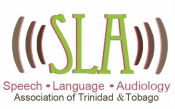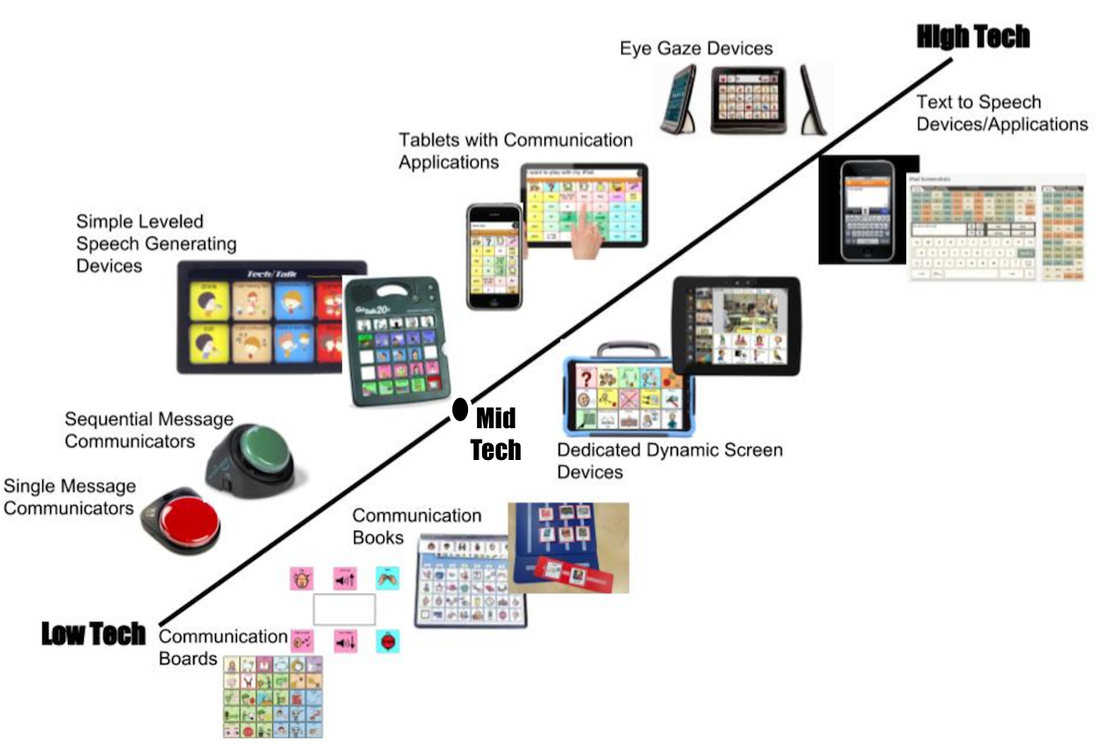Parents, educators and professionals are often at a loss when presented with a child who is nonverbal or whose speech is unintelligible (unclear) when conversing or communicating. Or if a person is unable to use their voice for whatever other reason unable to communicate.
Augmentative means to add to someone’s speech. Alternative means to be used instead of speech. (asha.org)
So let’s answer the WHAT, WHO, WHERE, WHEN and WHY AAC!
WHAT?
AAC is an internationally recognized area of clinical and educational practice that attempts to compensate and augment (increase) temporarily or permanently, for those with disabilities who struggle with speech-language production and comprehension in spoken and written modes.
WHO?
A child or person whose speech is not developing within the realm of what is considered typical, or is not likely to develop normal speech due to Autism, Down Syndrome, Cerebral Palsy is a potential candidate for AAC. AAC can be used for persons who have Aphasia, Traumatic Brain Injury, Multiple Sclerosis or other progressive diseases such as ALS which would affect their communication. AAC has been shown to enhance a child or person’s ability to communicate and have better functional interactions with others.
WHERE?
We all have something we want to communicate at any given time. Using some form of AAC allows for a child or person to directly gain control over the environment, to regulate social encounters and to receive and convey information at all times. So… AAC EVERY WHERE and ANYTIME!
WHEN?
Some people use AAC throughout their life. Others may use AAC only for a short time, such as post-surgery. A child with communication impairment is at risk for Learned Helplessness. Adults often do not expect the child to inform them of his or her needs and wants. They anticipate and often misinterpret the child's needs and end up doing everything for the child. Having a form or means to communicate can increase a child’s ability to become an independent thinker and communicator, to prevent Learned Helplessness. So… AAC ALL THE TIME!
WHY?
Everyone should be given the right to be able to express their basic wants and needs, and to even express what is in their hearts, no matter the means of communication. Because a person cannot communicate using words, does not mean they have nothing to say.
TYPES of AAC
Here are the different types of AAC:
No-tech to low-tech includes:
Some people wonder if children need to be a certain age before they can use AAC. Research shows that AAC helps people of all ages (even those younger than 3 years old)! You can use AAC early. There are no thinking skills, test scores, or other milestones that you need to reach before AAC can help (ash.org). AAC communicators often learn how to communicate using low or high tech AAC, in a similar way that children learn to communicate verbally…with continuous exposure and opportunities.
Would AAC Prevent Natural Speech Development?
A child who is unable to communicate effectively is unable to participate meaningfully in many activities, and is at great risk for delays in cognitive, social and emotional development. While it may be appropriate in some cases to continue to focus on speech, it is unfair to leave a child with little or no means of having a way to communicating effectively.
Think about a place that you spend the most time and with whom do you communicate?
How do you communicate? If you are unable to communicate using words, how would that change your life and even affect your relationships with others in the world?
We all have something to say, something to share, something to give to the world. If we are unable to use our voice to do so, some form of AAC is therefore necessary to create a space where a person’s voice can be heard.
Sirlon George
Speech Language Pathologist
October 2021
Augmentative means to add to someone’s speech. Alternative means to be used instead of speech. (asha.org)
So let’s answer the WHAT, WHO, WHERE, WHEN and WHY AAC!
WHAT?
AAC is an internationally recognized area of clinical and educational practice that attempts to compensate and augment (increase) temporarily or permanently, for those with disabilities who struggle with speech-language production and comprehension in spoken and written modes.
WHO?
A child or person whose speech is not developing within the realm of what is considered typical, or is not likely to develop normal speech due to Autism, Down Syndrome, Cerebral Palsy is a potential candidate for AAC. AAC can be used for persons who have Aphasia, Traumatic Brain Injury, Multiple Sclerosis or other progressive diseases such as ALS which would affect their communication. AAC has been shown to enhance a child or person’s ability to communicate and have better functional interactions with others.
WHERE?
We all have something we want to communicate at any given time. Using some form of AAC allows for a child or person to directly gain control over the environment, to regulate social encounters and to receive and convey information at all times. So… AAC EVERY WHERE and ANYTIME!
WHEN?
Some people use AAC throughout their life. Others may use AAC only for a short time, such as post-surgery. A child with communication impairment is at risk for Learned Helplessness. Adults often do not expect the child to inform them of his or her needs and wants. They anticipate and often misinterpret the child's needs and end up doing everything for the child. Having a form or means to communicate can increase a child’s ability to become an independent thinker and communicator, to prevent Learned Helplessness. So… AAC ALL THE TIME!
WHY?
Everyone should be given the right to be able to express their basic wants and needs, and to even express what is in their hearts, no matter the means of communication. Because a person cannot communicate using words, does not mean they have nothing to say.
TYPES of AAC
Here are the different types of AAC:
No-tech to low-tech includes:
- gestures and facial expressions
- writing/drawing
- spelling words by pointing to letters
- using single pictures or visual sentences
- Speech Generating Devices (SGD) which plays messages that you record (up to 6-10 secs) .The user pushes a button with a corresponding picture, and the SGD plays the message. For e.g. the child can push the button on the device to say “I love you” to mom and dad.
- using a communication app on an iPad or tablet
- Using a keyboard (real or virtual) to type in messages to request, comment and/or share thoughts and ideas.
Some people wonder if children need to be a certain age before they can use AAC. Research shows that AAC helps people of all ages (even those younger than 3 years old)! You can use AAC early. There are no thinking skills, test scores, or other milestones that you need to reach before AAC can help (ash.org). AAC communicators often learn how to communicate using low or high tech AAC, in a similar way that children learn to communicate verbally…with continuous exposure and opportunities.
Would AAC Prevent Natural Speech Development?
A child who is unable to communicate effectively is unable to participate meaningfully in many activities, and is at great risk for delays in cognitive, social and emotional development. While it may be appropriate in some cases to continue to focus on speech, it is unfair to leave a child with little or no means of having a way to communicating effectively.
Think about a place that you spend the most time and with whom do you communicate?
How do you communicate? If you are unable to communicate using words, how would that change your life and even affect your relationships with others in the world?
We all have something to say, something to share, something to give to the world. If we are unable to use our voice to do so, some form of AAC is therefore necessary to create a space where a person’s voice can be heard.
Sirlon George
Speech Language Pathologist
October 2021

